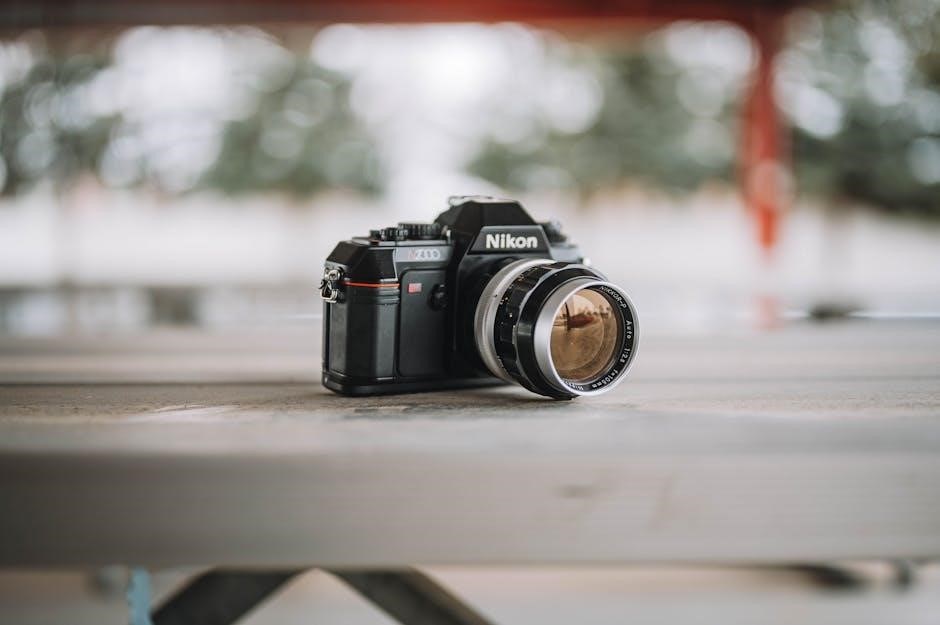nikon d300 user manual
The Nikon D300 is a high-performance DSLR camera designed for professionals and enthusiasts, offering a 12.3-megapixel CMOS sensor and EXPEED image processing for exceptional image quality. Built with a durable magnesium alloy body and weather-sealed design, it ensures reliability in challenging conditions. With a 3-inch LCD screen, 51-point autofocus system, and compatibility with CF memory cards, the D300 delivers versatility and precision. Its intuitive controls and advanced features make it a favorite among photographers seeking both creativity and technical excellence. Whether for studio work or outdoor photography, the D300 remains a powerful tool for capturing stunning images with ease and precision.
Understanding the Camera’s Basics
The Nikon D300 is a high-quality DSLR camera designed for both professional and enthusiast photographers. It features a 12.3-megapixel CMOS sensor and Nikon’s EXPEED image processing engine, delivering sharp and detailed images. The camera has a robust magnesium alloy body with weather sealing, ensuring durability in harsh conditions. The 3-inch LCD screen provides a clear view for image review and menu navigation. The D300 also includes a 51-point autofocus system for precise subject tracking and supports CF memory cards for storage. Key controls like the MODE button and command dials allow easy access to settings. Familiarizing yourself with these basics is essential for optimizing your photography experience. The D300’s intuitive design makes it easy to navigate, even for newcomers, while offering advanced features for seasoned photographers.
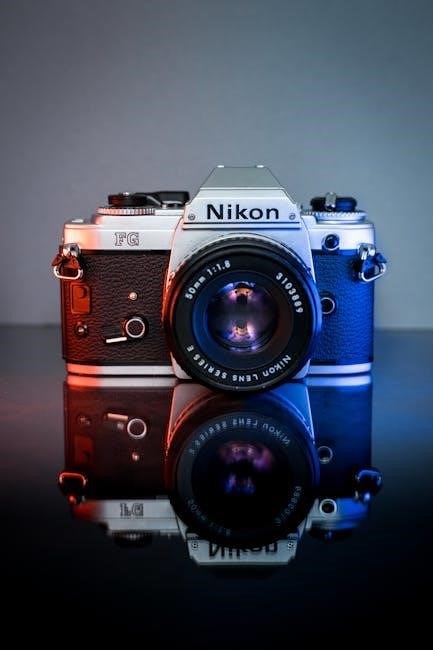
Key Features of the Nikon D300
The Nikon D300 features a 12.3MP CMOS sensor, EXPEED processor, 51-point AF, magnesium alloy body, 3-inch LCD, CF card support, and compatibility with a wide range of lenses.
Sensor and Image Quality
Sensor and Image Quality
The Nikon D300 features a 12.3-megapixel CMOS sensor, delivering outstanding image quality with fine details and rich colors. Utilizing Nikon’s EXPEED image processing, it ensures low noise, high dynamic range, and accurate color reproduction. The sensor’s responsive performance across a wide ISO range (100-6400) makes it suitable for both bright and low-light conditions. With support for NEF (RAW) and JPEG formats, photographers can capture images with flexibility for post-processing. The D300’s sensor is particularly noted for its ability to produce sharp, high-resolution prints, even at larger sizes like 20×30 inches, making it a reliable choice for professional and enthusiast photographers alike.
Build and Durability
The Nikon D300 boasts a robust, professional-grade build, featuring a magnesium alloy body that ensures durability and resistance to harsh conditions. Its weather-sealed design protects against dust and moisture, making it ideal for outdoor and challenging environments. The camera’s solid construction provides a comfortable grip and intuitive controls, designed for extended use. With a shutter life expectancy of approximately 150,000 cycles, the D300 is built to withstand heavy use. Its long-lasting battery life supports extended shooting sessions, while the overall craftsmanship reflects Nikon’s commitment to reliability. Whether in studio settings or rugged outdoor photography, the D300’s durable build ensures consistent performance and longevity, making it a trusted companion for photographers seeking a dependable workhorse.

Setting Up the Camera
Begin by formatting the memory card and charging the battery. Navigate the menu system to set date, time, and language. Customize shooting settings and autofocus options to suit your needs. Ensure all lenses are properly calibrated and mounted. Use Nikon software for transferring images and managing workflows efficiently. Regular firmware updates and battery maintenance are crucial for optimal performance. Adjust settings like exposure compensation and white balance as required. Familiarize yourself with the camera’s ergonomics and button layout for intuitive operation. This initial setup ensures a seamless and personalized shooting experience with the Nikon D300, tailored to your photography style and preferences.
Initial Setup Process
Start by unpacking and charging the battery. Insert a formatted CF memory card to ensure proper function. Turn on the camera and navigate the menu system to set the language, date, and time. Familiarize yourself with the camera’s controls, including the MODE button for selecting shooting modes. Use the rear command dial to adjust settings and customize the camera to your preferences. Check that the minimum aperture is correctly set for AI/AIS lenses to avoid exposure issues. Set up the autofocus system by selecting the appropriate AF mode and fine-tuning if necessary. Finally, ensure the firmware is up to date for optimal functionality. This initial setup ensures a smooth and personalized experience with the Nikon D300.
Configuring Custom Settings
Access the Custom Setting Menu to tailor the D300 to your preferences. Adjust autofocus settings like AF-C priority selection for dynamic shooting. Fine-tune metering modes and bracketing options for precise exposures. Set custom white balance or adjust ISO sensitivity to suit your style. Define button functions for easier access to frequently used features. Save settings under custom shooting banks for quick access during different photography scenarios. Explore advanced options like focus tracking and flash control to enhance your workflow. Regularly review and update these settings to optimize performance. This customization ensures the D300 adapts seamlessly to your creative vision and shooting requirements, providing a personalized experience.
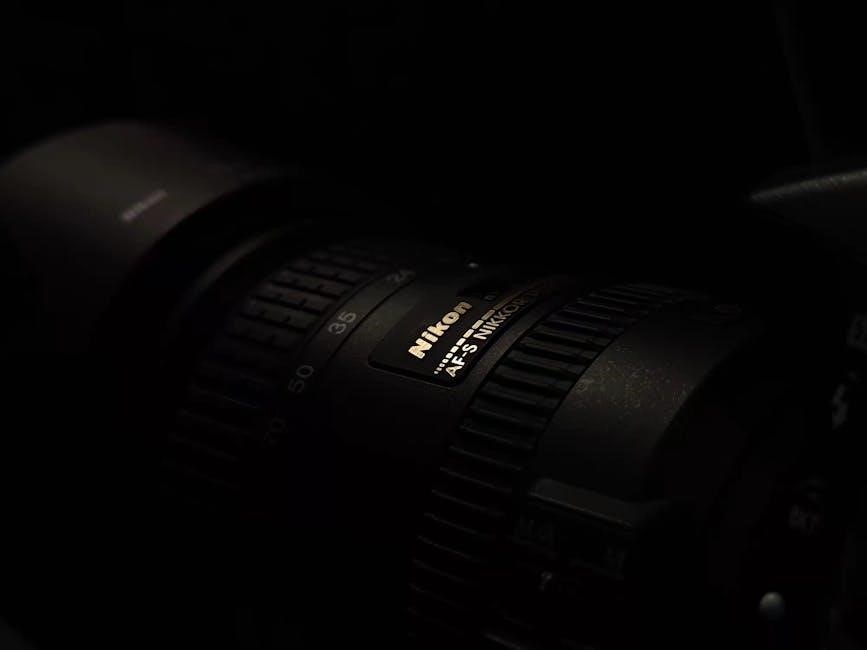
Shooting Modes
The D300 offers Aperture Priority (A/Av) and Manual (M) modes, allowing precise control over depth of field and exposure settings for creative flexibility in various photography scenarios.
Aperture Priority Mode
Aperture Priority Mode (A/Av) on the Nikon D300 allows photographers to manually set the aperture while the camera automatically adjusts the shutter speed for optimal exposure. This mode is ideal for controlling depth of field, making it perfect for portraits, where a wide aperture (like f/2.8) can blur the background, or landscapes, where a narrow aperture (like f/11) ensures sharpness across the frame. Users can select their desired f-stop value using the aperture ring on the lens or the command dial. The camera then calculates the appropriate shutter speed based on the selected aperture and metered light. This mode provides creative flexibility while maintaining accurate exposures, making it a popular choice for photographers who want to prioritize depth of field without manually adjusting both aperture and shutter speed.
Manual Mode
Manual Mode (M) on the Nikon D300 offers full creative control, allowing photographers to independently adjust both aperture and shutter speed. This mode is ideal for experienced shooters who want precise control over exposure settings. To use Manual Mode, press the MODE button and rotate the rear command dial until “M” appears on the LCD. Adjust the aperture using the lens aperture ring or the front command dial, and set the shutter speed with the rear command dial. The camera’s meter will provide guidance, but the photographer must balance the settings for the desired exposure. Manual Mode is particularly useful in challenging lighting conditions or when a specific creative effect, such as intentional overexposure or underexposure, is desired. It requires a good understanding of exposure principles but offers unparalleled flexibility for achieving unique results.

Autofocus and Metering
The Nikon D300 features a 51-point autofocus system with Scene Recognition and advanced tracking. Metering options include Matrix, Center-Weighted, and Spot modes for precise exposure control, ensuring sharp focus and balanced lighting in various conditions.
Understanding Autofocus Modes
The Nikon D300 offers advanced autofocus capabilities with three primary modes: Single Servo AF (AF-S), Continuous Servo AF (AF-C), and Manual Focus (MF). AF-S is ideal for stationary subjects, locking focus instantly when the shutter is pressed halfway. AF-C is designed for moving subjects, continuously adjusting focus as the subject moves. MF allows manual control for precise focusing, especially useful with older AI/AIS lenses. The camera also features AF-A, which automatically switches between AF-S and AF-C based on subject movement. With 51 AF points, the D300 provides extensive coverage, and customizable settings like AF-C priority selection (Release or Focus) ensure tailored performance for various shooting scenarios, enhancing accuracy and versatility in capturing sharp images.
Metering Techniques
The Nikon D300 features three metering modes: 3D Color Matrix Metering II, Center-Weighted Metering, and Spot Metering. The 3D Color Matrix Metering II is the default and most advanced, using 1,005-pixel analysis to balance exposure based on color, brightness, and composition. Center-Weighted Metering emphasizes the central 8mm of the frame, ideal for portraits or subjects in the middle. Spot Metering measures light from a small area (1% of the frame), useful for high-contrast scenes or precise control. Additionally, the D300 allows exposure compensation and bracketing for fine-tuning. By selecting the right metering mode and adjusting settings, photographers can achieve accurate exposures tailored to their creative vision, ensuring optimal results in various lighting conditions.
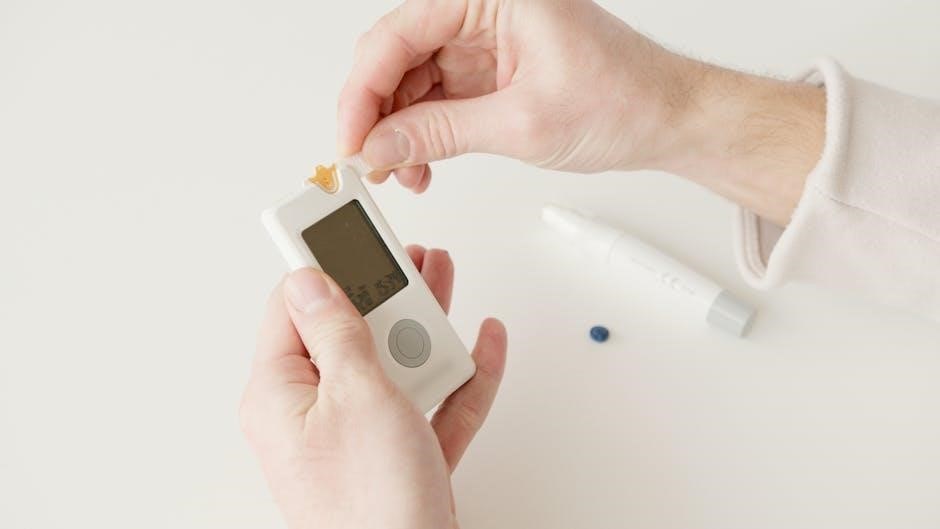
Custom Settings
The Nikon D300 offers extensive customization options, allowing photographers to tailor camera behavior to their preferences. Custom settings include autofocus adjustments, exposure tweaks, and personalized configurations for optimal performance.
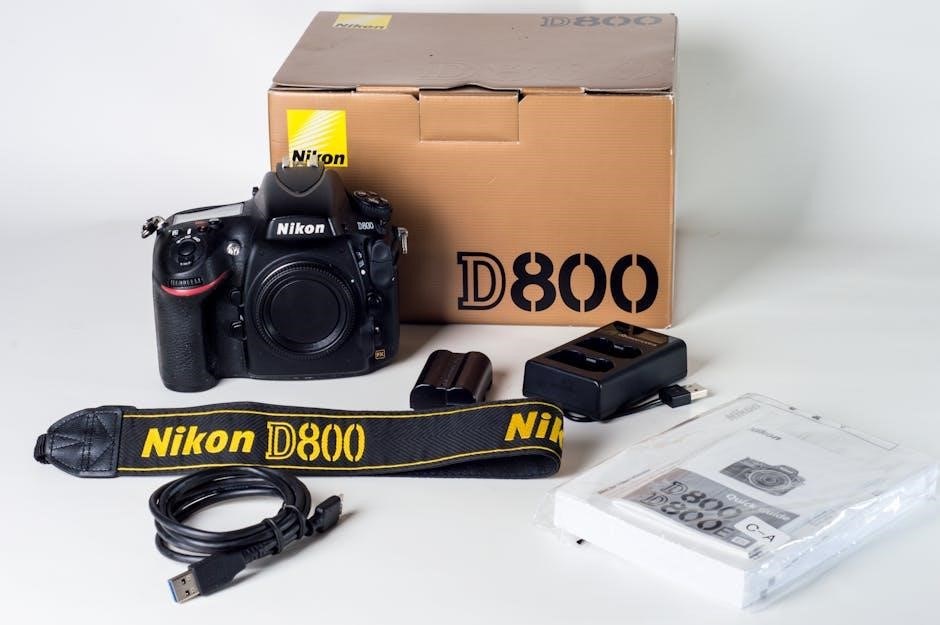
Personalizing Camera Settings
Personalizing camera settings on the Nikon D300 allows photographers to tailor the camera to their specific needs and shooting styles. The camera offers a wide range of customization options, including autofocus modes, metering techniques, and exposure adjustments. Users can assign frequently used functions to specific buttons, streamlining their workflow. Custom settings also enable photographers to save preferred configurations for quick access during different shooting scenarios. The D300’s menu system is intuitive, making it easy to navigate and adjust settings. By personalizing these options, photographers can enhance their creativity and efficiency, ensuring optimal results in various lighting and compositional conditions. This level of customization makes the D300 a versatile tool for both professional and enthusiast photographers.
Saving and Loading Settings
The Nikon D300 allows users to save and load custom settings, ensuring consistency and efficiency. By accessing the Custom Setting Menu and selecting “Save/Load Settings,” photographers can store their preferred configurations on a memory card. This feature is particularly useful for maintaining settings across multiple shoots or when resetting the camera. Saved settings are stored as .DAT files, which can be reloaded whenever needed. This capability ensures that photographers can quickly return to their optimized setups, saving time and minimizing errors. The D300’s ability to save and load settings enhances workflow flexibility, making it a valuable tool for professionals and enthusiasts alike who rely on consistent camera behavior in various shooting scenarios.
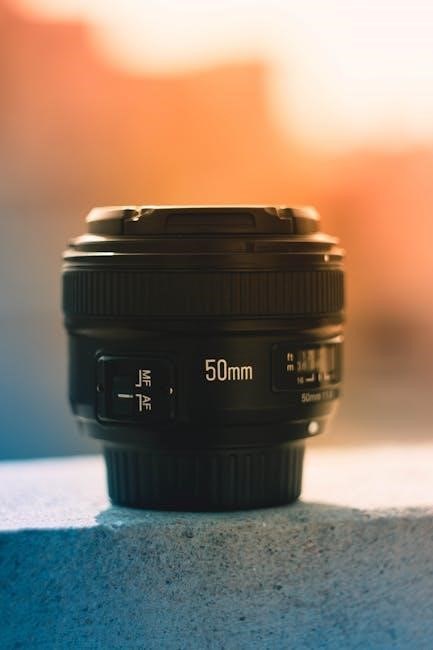
Managing Images
Transfer NEF files using a card reader and Nikon’s Transfer software. Use Nikon NX to edit and convert files to JPEG. The software is free and user-friendly.
Workflow Tips
Efficiently manage your Nikon D300 images by organizing files into folders during transfer. Use a card reader to move NEF files to your computer, ensuring faster data transfer. Utilize Nikon’s Transfer software to import images directly into editing programs like Nikon NX. Edit and enhance your photos, then save them as JPEGs for sharing. Backup your files to an external drive or cloud storage to prevent data loss. For batch processing, use software tools to apply consistent adjustments across multiple images. Regularly clean and maintain your memory cards to prevent corruption. Additionally, consider using the Nikon Manual Viewer 2 app for quick access to guides and tips on optimizing your workflow. This streamlined approach ensures your images are securely stored, easily accessible, and ready for editing or sharing.
Using Nikon Software
Nikon’s software suite, including Nikon Transfer and Nikon NX, offers powerful tools to enhance your D300 workflow. Nikon Transfer allows seamless import of NEF files from your memory card, while Nikon NX provides advanced editing capabilities with non-destructive adjustments. Use batch processing to apply consistent edits across multiple images, ensuring efficiency. The software also supports tethered shooting, enabling direct image transfer to your computer during sessions. Additionally, the Nikon Manual Viewer 2 app provides quick access to user guides and technical information. By leveraging these tools, photographers can streamline their post-processing workflow, maintain high image quality, and unlock the full potential of their D300. Regular software updates ensure compatibility and performance optimizations, making Nikon’s software an essential companion for D300 users.
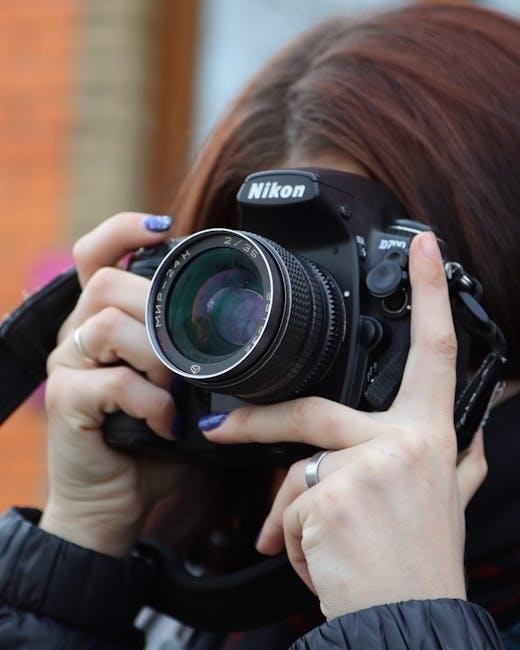
Camera Maintenance
Regular maintenance ensures the Nikon D300’s optimal performance. Clean the sensor gently with a soft brush and avoid harsh chemicals. Protect the camera from dust and moisture, and handle with care to prevent damage. Keep the firmware updated and store batteries properly to maintain their longevity. Always use genuine Nikon parts and accessories to preserve functionality and image quality. By following these practices, you extend the camera’s lifespan and ensure reliable operation in various shooting conditions. Proper care enhances durability and maintains the D300’s exceptional performance for years of professional use. Regular checks and timely servicing are crucial for sustained excellence. Cleanliness and careful handling are key to preserving its advanced features and ensuring consistent results. Maintain the camera’s exterior and interior to uphold its reliability and image quality. Schedule periodic professional servicing to address wear and tear, ensuring the D300 continues to deliver outstanding performance.
Cleaning the Sensor
Cleaning the Nikon D300’s sensor is essential for maintaining image quality. Use a soft-bristled brush to gently remove dust and debris. For stubborn spots, apply a cleaning solution with a microfiber swab, avoiding direct contact with the sensor surface. Always power off the camera and use the mirror lock-up feature (found in the custom settings menu) to access the sensor. Clean in a dry, dust-free environment to prevent reintroducing particles. Avoid harsh chemicals or excessive pressure, which can damage the sensor. If unsure, consult a professional. Regular cleaning ensures sharp, dust-free images and preserves the camera’s performance. Use only Nikon-recommended cleaning tools to avoid damage. Proper technique is crucial to maintain the sensor’s integrity and extend the camera’s lifespan.
Battery Care
Proper care of the Nikon D300’s battery ensures optimal performance and longevity. Use only Nikon-approved chargers to avoid damage. Avoid overcharging, as it can reduce battery lifespan. Store batteries in a cool, dry place, away from extreme temperatures. If the battery is not in use for an extended period, charge it to 50% capacity and store it. Clean the battery terminals with a soft cloth to maintain good contact. Replace the battery if it no longer holds a full charge or shows signs of swelling. Use the battery level indicator on the camera to monitor its status. For issues like a “low battery” warning, update the camera firmware, as this often resolves such problems. Proper battery care ensures reliable performance and extends the life of your Nikon D300.

Troubleshooting Common Issues
Troubleshooting the Nikon D300 involves checking buffer status, ensuring firmware updates, and resolving error messages promptly to maintain optimal performance and prevent operational disruptions effectively.
Buffer and Memory Card Problems
Buffer and memory card issues are common with the Nikon D300. If the buffer is full, the camera may display “Full” or “R00,” indicating it cannot write to the CF card. This often occurs during rapid continuous shooting. To resolve this, ensure the CF card is compatible and has sufficient space. Verify the card’s health by checking for errors using a card reader. If the problem persists, format the card in the camera or try a different CF card. Additionally, ensure the card is properly seated and the camera’s firmware is up to date. If the issue recurs, the buffer may be overwhelmed, so reduce burst mode usage or upgrade to a faster memory card for smoother operation.
Firmware Updates
Firmware updates are essential for optimizing the Nikon D300’s performance and addressing potential issues. Nikon periodically releases firmware updates to improve functionality, fix bugs, and enhance compatibility with lenses and accessories. To update the firmware, visit Nikon’s official website, download the latest version, and follow the instructions provided. Ensure the camera is connected to a computer via a USB cable and the battery is fully charged. Once the update is complete, restart the camera to apply the changes. Firmware updates can resolve issues like low battery warnings, autofocus inaccuracies, and memory card compatibility. Regularly checking for updates ensures your D300 operates at its best, providing a seamless and reliable shooting experience for photographers of all levels. Always use the official Nikon website to avoid unauthorized or corrupted firmware files.
The Nikon D300 is a powerful tool for capturing stunning images, offering durability, advanced features, and exceptional image quality. By mastering its modes, settings, and maintenance tips, photographers can unlock its full potential and enjoy remarkable results.
Final Tips for Mastering the D300
To fully utilize the Nikon D300, familiarize yourself with its manual modes and custom settings. Regularly update the firmware to ensure optimal performance and address any bugs. Clean the sensor periodically to avoid dust spots in your images. When using manual AI/AIS lenses, trust the electronic rangefinder for accurate focusing. Experiment with Aperture Priority and Manual modes for creative control over your shots. Always carry spare batteries and memory cards, especially during extended shoots. Use a tripod for stability in low-light conditions and long exposures. Lastly, explore Nikon’s software tools for post-processing and workflow efficiency. By mastering these tips, you’ll unlock the D300’s full potential and elevate your photography to new heights.
